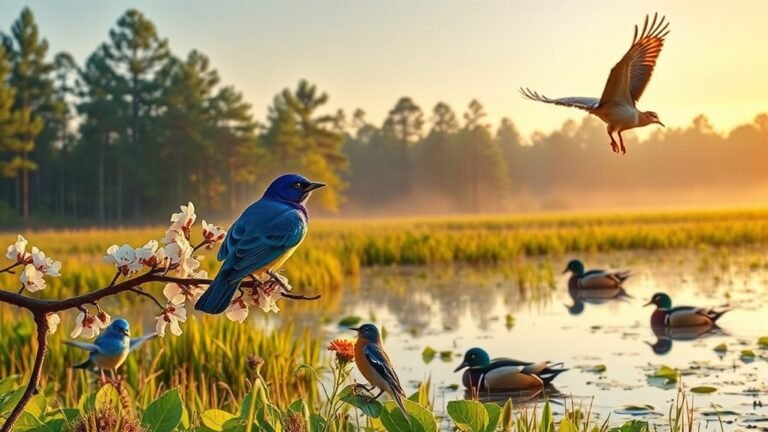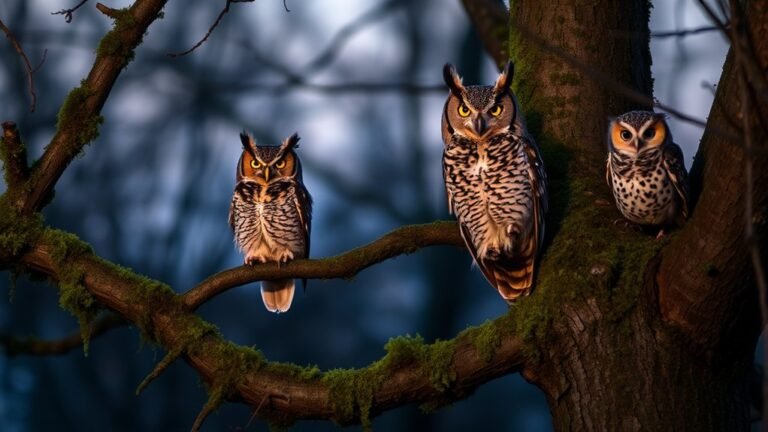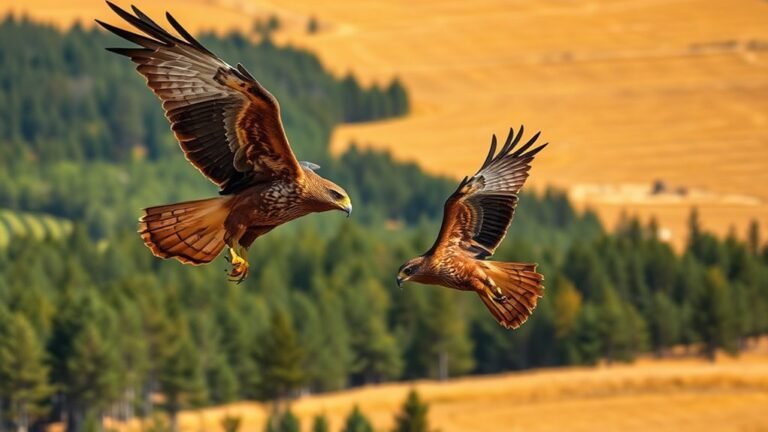Birds With Red Heads: Identification Guide
When you watch birds, red-headed ones can be really eye-catching. Birds like the Red-headed Woodpecker, Northern Cardinal, and Scarlet Tanager each have special features that help you tell them apart. Learning to spot these traits can make your birdwatching more fun and help you see how different birds are.
But these birds are not just about their bright colors. Where they live and their songs tell us a lot about them too. Let's take a closer look at these interesting birds.
A Quick Overview
Birds With Red Heads: Quick Identification Guide
- Red-headed Woodpecker: This bird has a bright red head and a white body. You can find it in open woods with dead trees.
- Male Northern Cardinal: The male cardinal is a bright red bird known for its sweet songs, especially near bird feeders.
- Scarlet Tanager: During breeding season, this bird shows off its vibrant red feathers. It sings lovely songs throughout the summer.
- Red-headed Duck: These ducks have red heads and like to hang out in groups. You can see them flying near lakes and rivers.
- Red-Shouldered Hawk: This hawk has reddish-brown feathers and can be recognized by its loud call. It hunts skillfully in wooded areas.
Now you know more about these amazing birds! Look for them next time you're outside.
Red-headed Woodpecker: A Stunning Showcase of Color

The Red-headed Woodpecker is a colorful bird that catches the eye of everyone who sees it. This bird has a bright red head, a white body, and shiny black wings. The colors make it easy to spot in the trees.
These woodpeckers have special ways to find food. They use their strong beaks to dig into tree bark, looking for insects to eat. They like to live in open woods and fields where there are plenty of dead trees. These trees are perfect for nesting and finding food.
During mating season, Red-headed Woodpeckers make a loud drumming sound. This noise helps them mark their territory and attract partners.
Watching these birds is fun and helps you connect with nature. Dive into their life, and you'll discover a lot about their habits and behaviors.
Northern Cardinal: The Iconic Backyard Bird
Northern Cardinals are bright red birds you can often see in backyards. They sing beautiful songs, and their playful behavior is fun to watch. Male cardinals sing to mark their territory.
Female cardinals like to build nests near bird feeders, where food is easy to find. These birds love eating seeds, especially sunflower seeds. You can find them foraging on the ground or at feeders.
During breeding season, they share food with each other. This helps them build a strong bond. Watching cardinals can help you appreciate nature more. Each sighting adds to the joy of birdwatching and connects you with other bird lovers.
Enjoy the vibrant beauty of these backyard favorites!
Scarlet Tanager: A Summer Gem

Scarlet Tanagers are bright, colorful birds that come to visit us in the summer. Unlike the Northern Cardinals, which stay in our backyards all year, Scarlet Tanagers are only here during the breeding season. You can find them in leafy forests across eastern North America.
Every spring, these birds travel a long way from the warm, tropical places in South America back to North America. When it's time to breed, male Scarlet Tanagers show off their bright red feathers to get the attention of females and protect their spaces. Their sweet songs fill the air and make the forest sound lively during summer.
When you spot a Scarlet Tanager, it's not just about seeing a beautiful bird. It helps you feel more connected to nature and appreciate all the birds around you. Watching these birds can make your summer days even more special.
Red-headed Duck: Unique Characteristics and Habitats
Red-headed Ducks are special birds that stand out because of their bright red heads and smooth bodies. You can spot them easily in the water. These ducks like to hang out with friends, so you often see them in groups, especially when they migrate to warmer places.
Their meals come from the water. They enjoy eating plants, seeds, and tiny water creatures. They find food by diving under the water or skimming the surface.
Red-headed Ducks prefer living in places like lakes, marshes, and rivers. They like areas with lots of plants because these spots provide good food.
Watching them find food and interact with one another can help you feel a special connection to these amazing birds and their homes.
Red-Shouldered Hawk: the Raptor With Flair

After learning about Red-headed Ducks, let's talk about the Red-Shouldered Hawk. This bird is medium-sized and has beautiful reddish-brown feathers with patterned wings. You can often hear their loud calls in wooded areas, which let you know they're nearby.
When you watch a Red-Shouldered Hawk, pay attention to how they hunt. They use a special technique called "hovering." This means they can stay in one place in the air for a moment before diving down to catch their food.
These hawks are very adaptable and like to eat small animals and birds, especially around water.
Seeing a Red-Shouldered Hawk in flight is amazing. Their beauty and skill in hunting make them fascinating to watch. You'll feel more connected to nature when you see these wonderful birds in action.
Frequently Asked Questions
What Do Birds With Red Heads Eat?
Birds with red heads have varied diets. They eat different foods based on what is available around them. Common foods include insects, seeds, and fruits. They change their meals with the seasons. This helps them find the best food at different times of the year. Understanding what they eat can give us insight into their habits and how they live.
Where Can I Find These Birds?
You can find these birds in different places like forests and wetlands. They often like to be near water. If you watch them build their nests, you can learn where they like to stay. They usually pick quiet spots where there is a lot of food. So, look for them in those areas, and you might see them!
Are Red-Headed Birds Migratory?
Red-headed birds have different ways of migrating depending on their breeding habits. Some red-headed birds fly very far to find better places for breeding, while others don't travel far at all and stay close to where they hatched. Learning about how these birds move during the seasons can help us understand how they adapt to their homes. Each type of red-headed bird has its own pattern, helping them survive in different environments. So, whether they're flying long distances or just hanging out locally, these birds are fascinating to watch and learn about.
How Can I Attract Them to My Yard?
To attract red-headed birds to your yard, start by putting up feeders filled with seeds they like. You might try sunflower seeds or mixed seeds. Next, add nesting boxes nearby. Place these items where the birds can easily see them. This friendly setup will help make your yard a cozy spot for them to visit. Enjoy watching the colorful birds come to you!
What Predators Threaten Red-Headed Birds?
Red-headed birds have some predators that can be a real threat to them. Common predators include hawks, snakes, and even domestic cats. These animals watch for chances to hunt the birds, especially when they are nesting.

Luna is the passionate founder and author of Birds and You, a website dedicated to sharing her love for birds with fellow enthusiasts. Through her engaging articles and guides, she aims to educate and inspire others to explore the fascinating world of birds. When she’s not writing, you can find Luna observing birds in their natural habitats or sharing beautiful bird photography on Pinterest. Join her on this journey to celebrate and protect our feathered friends!







